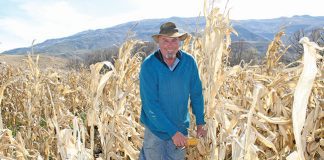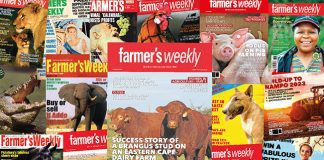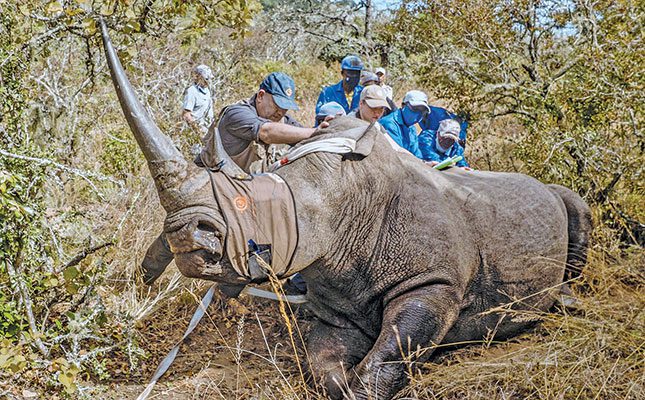
Photo: Supplied
South Africa has to ramp up its conservation efforts, including in the protection of threatened and endangered species, in order to meet its international commitments by 2030 as a signatory to the Convention on Biological Diversity.
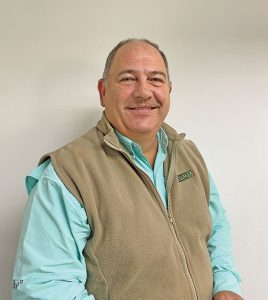
Acknowledging the urgency of taking action in this regard, government recently rolled out a ground-breaking tax incentive for the conservation of threatened species.
READ Community involvement in conservation and tourism
It is also in the process of amending the Threatened or Protected Species (TOPS) regulations, which will make it much easier for veterinarians to treat wild animals and assist in the conservation of vulnerable species.
“By reducing the red tape that currently hinders wildlife veterinarians, we will go far in actually increasing our efforts towards wildlife conservation,” says wildlife veterinary surgeon and South African Veterinary Council (SAVC) member Dr Johan Marais.
These moves are both steps in the right direction, he acknowledges, but there is a lot more work that needs to be done.
Only 400 000 elephants left
The decline in African elephant populations, for example, paints a grim picture, Marais says.
“A hundred years ago, there were so many elephants roaming around. Now, there are only about 400 000 left and just 0,1% are big tusker bull elephants, with only about 30 to 40 remaining,” says Marais, who has researched and written two books about these massive bull elephants.
“Finding such a bull has become quite rare. This decline is partly due to bull elephants being late breeders, peaking between 40 and 50 years. Most don’t live past 52, so their reproductive period is short. Compounding the issue, at around 38 to 40 years of age is when their tusks grow large, making them prime targets for ivory poaching, further preventing the transfer of their genes.”
Wildlife veterinarians such as Marais, as well as the teams of para-veterinary professionals they work with, play a pivotal role in helping protect the world’s biodiversity.
Besides treating animals that live in the wild for diseases and injuries, wildlife veterinarians also assist in introducing animals to new sanctuaries and doing genetic swaps to enhance genetic diversity in provincial and national parks.
Additionally, they focus on the reproduction of endangered species, like rhinos, through techniques like artificial insemination, a crucial countermeasure against the devastating effects of rhino poaching.
Regulations and incentives
A critical, yet often overlooked, issue in conservation is rhino range contraction as a result of fewer people wanting to keep rhinos due to the risks attached. According to Marais, game farm owners are becoming increasingly reluctant to keep rhinos, citing a lack of support for their conservation efforts as the main reason.
READ Is rhino breeding a potential gold mine for cattle farmers?
“The challenges in rhino conservation and maintenance, and the heightened security threats from poachers targeting their properties, have made the responsibility of looking after rhinos a rather huge risk,” he says.
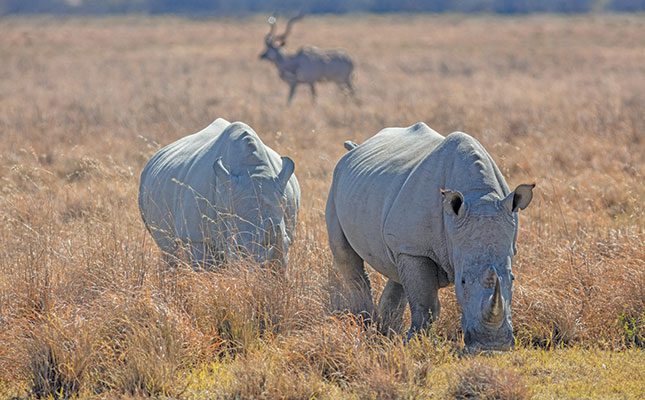
However, the new tax incentive for the conservation of threatened wildlife could help address this challenge. This initiative is a collaborative effort between the Department of Forestry, Fisheries and the Environment (DFFE), the Sustainable Finance Coalition and Wilderness Foundation Africa.
It aims to alleviate the financial and security burdens faced by landowners in conserving these species by allowing for tax deductions for expenses related to conservation activities, including security measures against poaching.
According to Marais, this incentive will partly assist towards assisting game farm owners in mitigating the risks and costs associated with maintaining rhinos and other threatened species on their land.
“I think the incentive is a good thing. If they can assist private rhino owners in any way possible, it would be helpful. Those people are playing a huge part in protecting our species, as the future of conservation lies within private hands,” he says.
One of the biggest challenges faced by wildlife veterinarians, he contends, is navigating the regulatory landscape. The TOPS regulations, for instance, have been a source of frustration, hindering timely and effective treatment of injured animals.
The SAVC has been advocating for years for the removal of this red tape, which restricts the movement and treatment of wildlife across different regions.
The new amended TOPS regulations (accompanied by an updated list of vulnerable species) are expected to be published in the Government Gazette by the DFFE in 2024, having closed for public comment on 21 November 2023.
Marais believes that if the government and stakeholders can further streamline the TOPS regulations, “we can make significant strides in our conservation endeavours”.
Breaking new ground
In his work as a wildlife and equine vet, Marais has pioneered treatments for severe animal injuries and performed complex surgeries, such as arthroscopic joint and abdominal colic surgery in rhino.
He has also treated rhinos with severe limb fractures; dealing with such large animals requires innovation and resilience, which may lead the professional to sourcing materials from unconventional places.
READ The benefits of conservation agriculture
He relates that having cast the limbs of several horses, he felt confident enough to perform similar procedures on rhino with fractured lower limbs, only to be caught off guard.
“The cast broke each time the rhino stood up,” he says.
This led his team to take the drastic and unusual step of sourcing building material to enhance the cast’s strength, “devising new approaches to treatment until we finally succeeded”.
Marais’s contributions to conservation in South Africa go beyond his veterinary practice to running a non-profit organisation, Saving the Survivors, and using literature to raise awareness about conservation.
In addition to his two books, his 20 peer-reviewed articles have not only presented ground-breaking techniques on equine surgery and the first-ever published article on white rhino sino-nasal anatomy, but have also shed light on crucial conservation issues.
This, he hopes, has resulted in a shift in public interest and understanding.
Visit savc.org.za.










